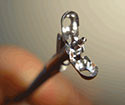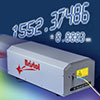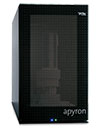|
Wednesday, August 5, 2015
|



|
Despite hurdles beyond the research realm, spectroscopy is advancing disease detection and treatment.
|
|
|
|

|


A Glowing Way to Monitor Forest Health
A faint glow emitted from plants during photosynthesis could be key to measuring the health of large areas of forests and croplands in real time. The glow can be detected by spectrometers aboard orbiting satellites.
|
|
|
|


|
|

|
|

|

|
Laser Wavelength Meter
Bristol Instruments
The best way to determine the absolute wavelength of CW lasers is with the 621 Series Laser Wavelength Meter from Bristol Instruments.
More info >>
|
|

|

|
Automated 3D
Raman Imaging
WITec GmbH
The WITec apyron is an automated confocal Raman microscopy system developed to overcome the boundary between ease-of-use and ultimate capability in 3D Raman Imaging.
More info >>
|
|



|
CCDs continue to be the sensor of choice for applications such as astronomy and spectroscopy. With future investment, we can expect improvements in sensor architecture, resolution, pixel size and depth, as well as readout speeds.
|
|
|
|

Laser Design Brings Attosecond Spectroscopy Closer
The field of ultrafast physics focuses on phenomena such as electron motions in molecules and atoms, which can take place on attosecond timescales. The ability to generate attosecond laser pulses would effectively permit electron motions to be "photographed."
|
|
|
|

Graphene Confines Light for Nanomolecular Sensing
Widely used for detecting larger molecules, IR absorption spectroscopy has been ineffective for detecting nanoscale molecules like proteins because mid-infrared wavelengths, around 6 µm, are much larger than the objects to be detected. This difference in scale can be overcome with graphene, which exhibits light confinement two orders of magnitude higher than other metals.
|
|
|
|

|
|
sponsor
 |

sponsor
 |



|